From military subterfuge to religious decorations and more, face and body art has been used in countless ways over the centuries. Either it’s homemade or professional body paints, you’ll see them everywhere around the world with many cultures.
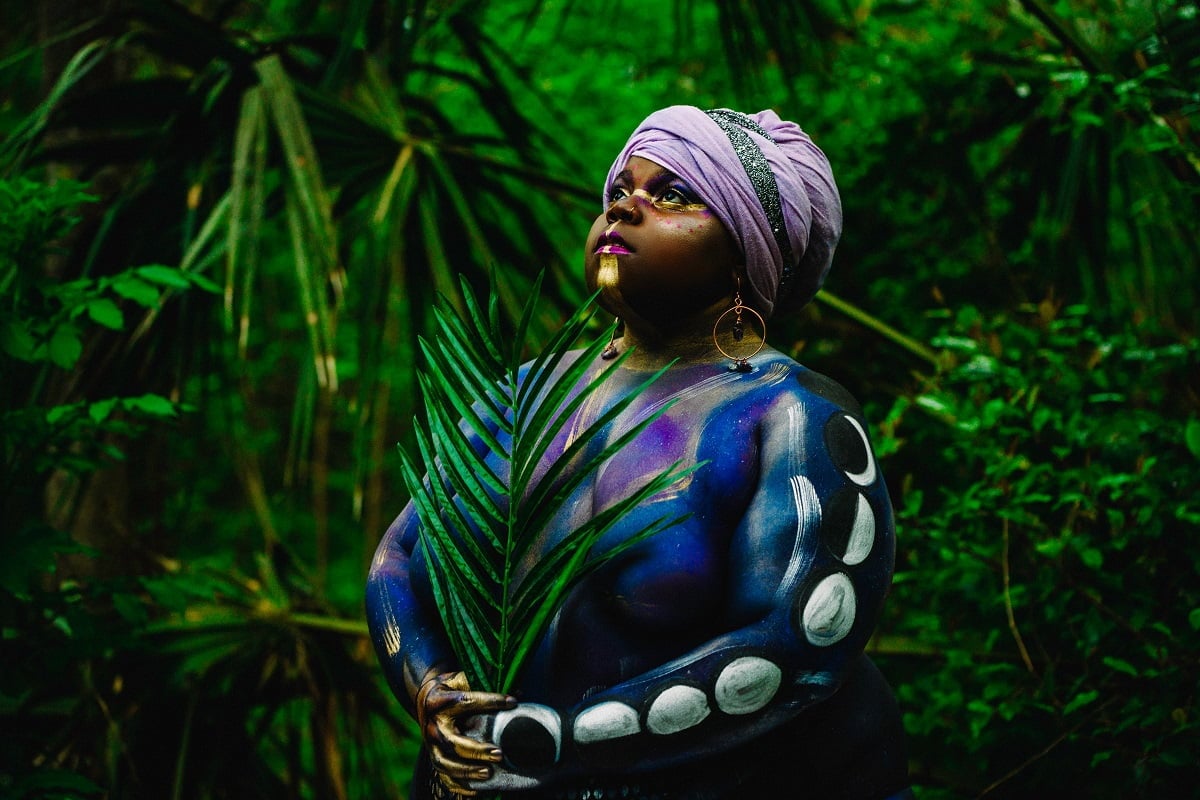
It has been used during festivals, conventions, and even to highlight various causes. While originally practiced by the indigenous people of Africa and Australia, it is now most commonly used as a form of entertainment. But like other forms of art, selecting the right tools is necessary for getting the best results.
Since the paint will be directly applied to the skin, it is important to find options that are completely safe. That is why it is recommended to use paints that are specially developed for the purpose, such as any water-based or alcohol-based formula. Our face and body are not like our home wall or ceiling; there also you cannot just use any types of paints. In fact, painting ceilings is not at all an easy job, they need skill sets and the right kind of paint that’ll stick to the ceiling without peeling off.
Besides these, there are some other options, so let’s look at them in detail.
Origin And Evolution Of Face And Body Art
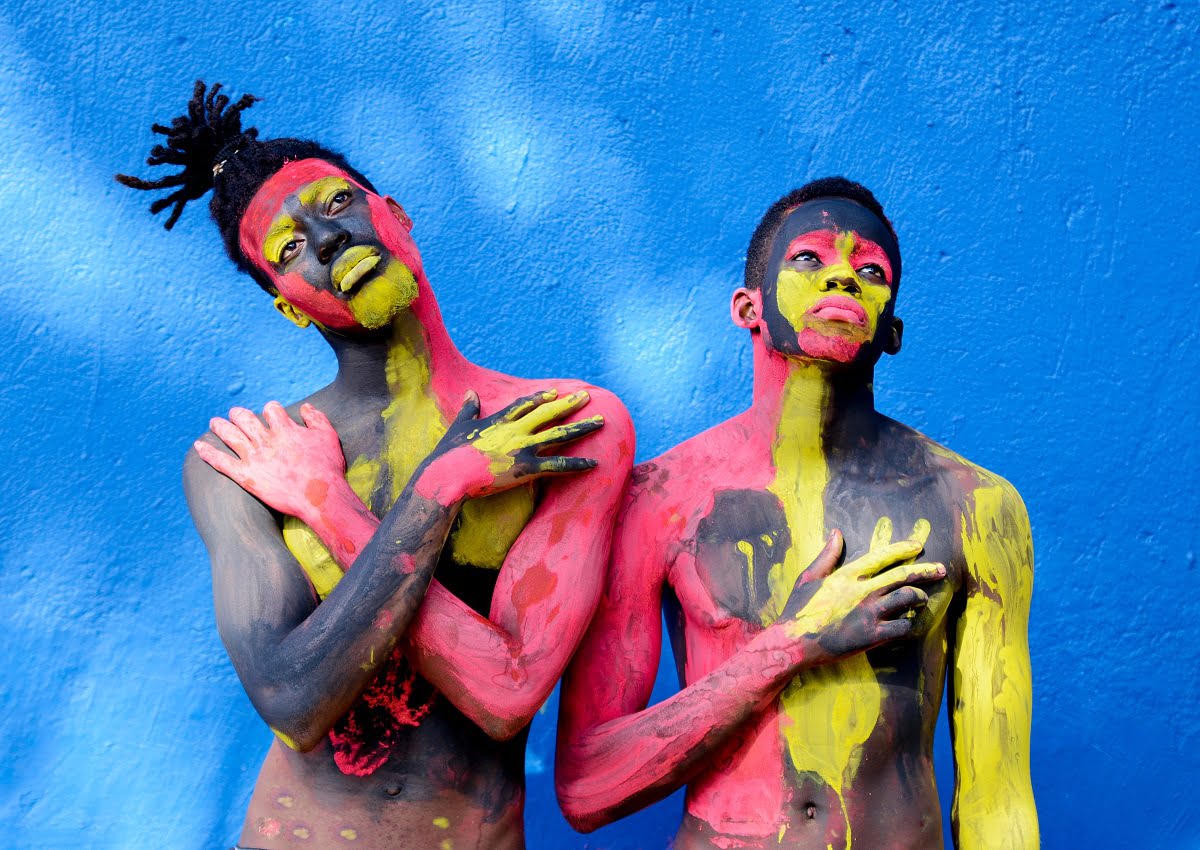
Nowadays, there are several paint options for the face and body. However, this type of art dating back to the paleolithic age had humble origins. The first items that were used as a face and body paint were pigments made from plants, animal by-products, ashes, and similar materials.
During the hunting-gathering phase of human evolution, body painting was used by tribal warriors for practical purposes like identification and camouflage. Such paint was also used for ceremonial rituals and inciting fear in enemies. Later, it became popular as a decorative item, used to enhance one’s appearance, similar to how makeup is used today.
However, the problem with many of the materials that were used for face and body painting in the earlier days was that they were not safe. Pigments made from rocks, plants, and animals often turned out to be toxic for the human body.
Even most of the options available currently, like acrylic paints, are not meant for use on the human skin, as they can cause allergic reactions and skin irritation. That is why you should make sure to select the right type of paint for body art. Supposedly on Halloween, acrylic paints are only good on Halloween paintings and decorations ideas and not on human skin.
Body Painting In Modern Times
Modern-day body and face painting mainly involve creating a living piece of art by decorating a person’s body, usually for purposes like:
- Promotional or marketing activities
- Costumes or part of costumes for parades, conventions, and similar events
- Competitions and festivals
Body painting also includes glitter tattoos, temporary tattoos, and other types of art usually created using various mediums.
What Does Body Painting Symbolize?
Various cultures associate different things with body painting, and these are different from body art done for ceremonial purposes or events by indigenous people. Indigenous people utilize body painting as an art form for special occasions like weddings, funerals, right of passage ceremonies, and other celebrations. For such events, various colors and patterns have different meanings.
In contrast, modern body art focuses on expressing an emotion or idea and is generally about the art itself. Body art is also used for celebrations but does not have any spiritual meaning and has a more decorative purpose, that of enhancing beauty.
Body Painting And Safety
Generally, body and face painting is completely safe if the right type of paint is used and proper instructions are followed. So, craft paints, which are not meant to be used on the skin, should be avoided at all costs. These include acrylic paint, regular spray paint, tempera paints, and others which can cause skin irritation, allergic reaction, or even chemical burns.
That is why you should always use paint specifically designed for the purpose, as these are completely safe.
The Best Types Of Paint For Face And Body Art
1. Water-based Paint
Water-based body paint is among the safest options if you’re going for face and body painting. Such paints need to adhere to certain quality guidelines and are properly regulated as they may also be used by kids. Besides being completely non toxic, they are easily washable and can be applied using several methods and tools. You can use a sponge, paintbrush, or toothbrush for the purpose.
However, keep in mind that water-based paints can easily be rubbed off and are susceptible to cracking. That is why they may not be the best option if you use them for professional purposes, like modeling.
2. Metallic Body Paint
If you’re trying to achieve a shiny, glossy look, metallic body paints might be an excellent option. These paints contain real metal powder blended with a synthetic liquid for application but they should be used cautiously. Since the powder is made up of real metal, it can cause skin irritation, which is why it is best for special occasions.
Compared to water-based paints, metallic paints do not rub off easily and last longer.
3. Alcohol-Based Paint
Generally used for making airbrush tattoos and for special effects applications, alcohol-based paint can resist heat and moisture for prolonged periods..
Being waterproof, these paints do not crack easily due to sweat and have to be removed using rubbing alcohol. Keep in mind that it may take some time for the paint to remove and you should do the same in a well-ventilated area, as the fumes can be toxic.
4. Latex Body Paint
Regular or liquid latex is another fantastic option for body art and is often used by cosplayers because it is more affordable than custom costume designs. One of the best things about this paint is that it does not leave any residue, unlike most other options. That said, it may not be ideal for those with latex allergies, as it can cause irritation and allergic reactions.
Latex paint is also not recommended for use in extreme heat, as it can cause heat stroke by blocking the perspiration process. And like many other types of paint, avoid applying it to damaged skin areas.
Another thing to keep in mind is that latex paint works just like wax when it comes to skin application, meaning that it can pull the hair out during removal. So, you should shave the areas where the paint has to be applied to minimize the pain when removing it.
5. Henna
One of the traditional body paints, henna is commonly used in Asia and coastal areas of Africa for body painting. Extracted from plant dye, it’s a reddish-brown pigment used for many purposes. In coastal African cities, women often use henna as decorative paint and body paint for when they are about to get married.
This is one of the safest types of body paint and can be used by kids and adults without worrying about any harmful effects. Being a temporary paint, it fades away naturally over time, but you can exfoliate your skin to speed up the process. However, unlike regular henna, black henna should be avoided since it contains chemicals that can cause allergic reactions and irritations.
6. Commercial Body Paint
You can find commercial body paint from different manufacturers for various purposes. These are generally available in containers or spray bottles and are nontoxic. They also do not contain any latex, making them a worthwhile option for those with latex allergies.
7. Markers
In addition to body paints, special markers can be used for body and face painting. Like commercial body paints, most such markers are non toxic and can be used by both children and adults. However, some may specify the areas of the body where they should not be used, so make sure to read the packaging before use.
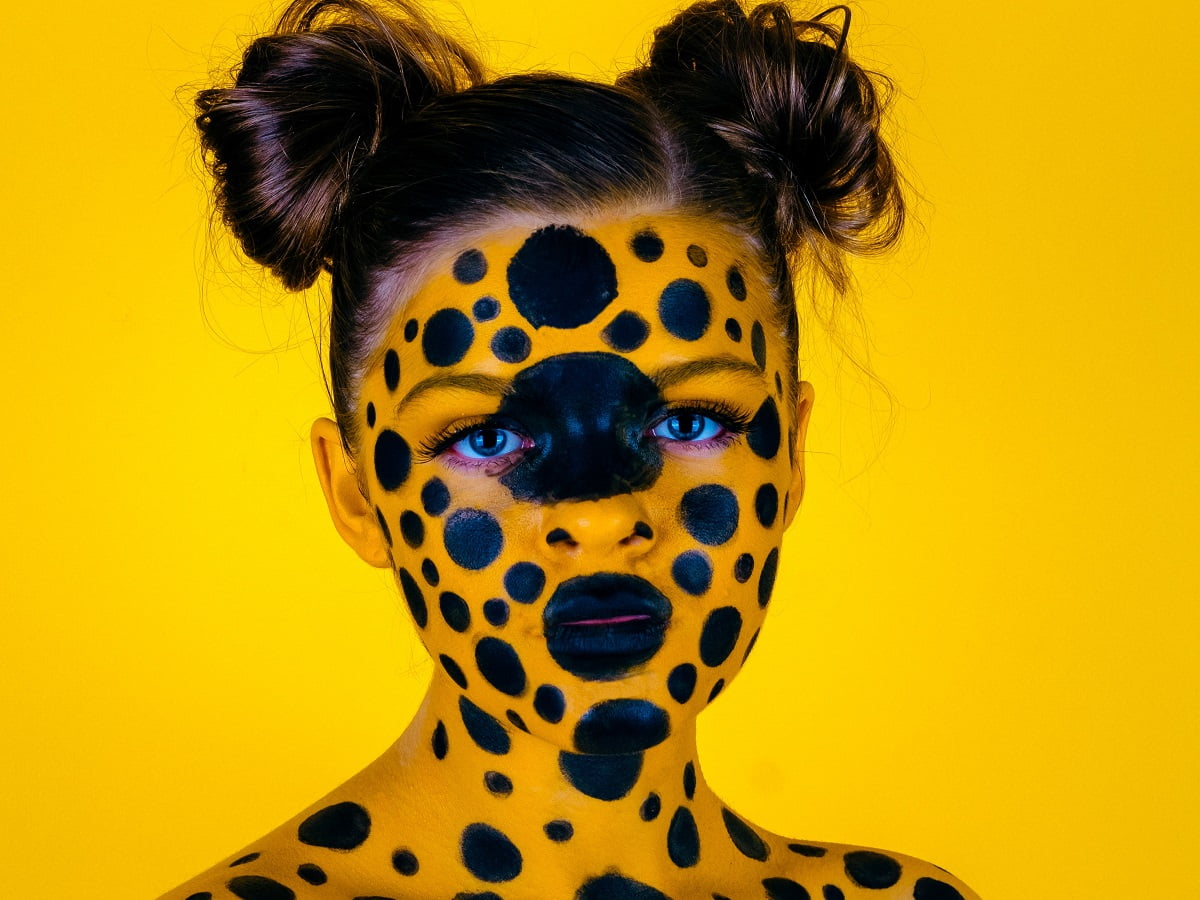
The Process Of Body Painting
Finding the right type of paint is vital for creating highly impressive body art, but that is not the only thing that requires attention. Before you can start, it is important to understand the process to ensure the best results.
Whether you are opting for face painting or both face and body painting, it will involve multiple steps and requires considerable effort and time.
1. Planning The Painting
Proper planning is the first and most important step in body painting and, in most cases, involves creating a sketch of the design you intend to paint. A sketch makes it easy to see whether various parts of the design work well on the areas of the body they will be painted on. Plus, it serves as a guide during the painting process.
However, it may not be required if you opt for a free-spirit look.
2. Preparing The Model And The Skin
It is important to ensure that the skin is completely clean and oil-free for the paint to stick to the skin. And the first step in this regard is to use a gentle soap to clean the skin. Avoid exfoliation or abrasive skin treatments, as they may damage the skin.
Once done, dry the skin using a towel and avoid the application of any lotions, creams, or other skincare products. This is because they can affect the ability of the paint to stick to the skin.
But you can use a barrier spray on the skin before painting, which will shield the skin from oils or sweating and prevent the paint from smudging.
3. Creating The Right Setup
Both face and body paintings require a lot of time to be completed, which is why creating a comfortable setup for the model is essential. For standing models, providing them with a soft cushion to stand on can be helpful. Similarly, depending on the temperature, you may need to provide a heat source since the model will be almost completely naked in most cases.
Ensure that the model stays well hydrated and maintains circulation by moving the legs as required. You will also need to provide the model time to take refreshments and breaks, as the process can be quite tiring.
4. Applying The Body Paint
The application process of body paint will depend upon its nature, as body paints are available in various formats such as water activated paints or liquid body paints.
A. Applying Water Activated Solid Body Paints
Water activated solid body paints are among the most popular options and are generally available in cake form. They may either be dry and hard or have a clayey consistency and are usually applied with water using a brush or sponge.
Start by moistening the sponge or brush and rub it across the body paint. When the paint acquires a creamy texture, it is ready to be applied as required. When you use a sponge, tap the surface repeatedly to get good coverage. You can also use a dry blending or stippling effect to create various textures.
Alternatively, you can make circular motions using a body brush or a kabuki brush when using. And use a nice selection of face painting brushes that includes filbert brushes, round brushes, and flat brushes to get those intricate details.
B. Applying Liquid Body Paints
Applying alcohol-based or liquid body paints is not very different from applying solid ones and can be done using a brush or sponge. If the paints are adequately thin, you can use an airbrush or thin them out first if they are not. An airbrush has three basic components, an airbrush gun, a hose, and an air compressor.
Put the paint inside the container provided on the airbrush and point the device towards the area of the body to be painted. Use the trigger to apply the paint onto the skin, and the distance between the airbrush and the skin will determine the effect. Hence, learning how to use an airbrush can take some time but it can be advantageous in helping speed up the painting process.
For this method, look for an airbrush compressor and guns designed for body painting, as regular ones can be quite strong for the skin.
Tools Required For Body Painting
1. Brushes
Body painting requires high-quality specialty brushes, mainly including a one-inch flat brush, a ¾-inch flat brush, and a medium size filbert brush. You will also need round brushes in sizes zero, two, three, and five, a ¾-inch angle brush, a smaller brush, and a kabuki style brush.
Also, keep in mind that brushes with synthetic bristles work better for body painting than those with natural hair.
2. Sponges
Almost all body painting projects require high-density sponges since they allow you to cover large parts of the body easily and quickly. You can find them in varying sizes, shapes, colors, and densities. The best options are half or full-circle sponges because they provide the largest painting surface.
Avoid using regular makeup sponges since they do not work very well with water-activated face paints. They are different from body painting sponge, which are made from reticulated polyether foam.
3. Setting Spray
This is an optional resource that can be very useful in certain cases. Apply a makeup sealer to the body paint to help increase its resistance to sweat, smudges, and water and ensure that it lasts longer. However, it will not make the body paint smudge-proof, sweatproof, or waterproof. For that, you need to use alcohol-based paints.
Removing Body Paint
Compared to the application process, the removal process of the body paint is easier and does not require as much time or effort. The longer you wear the paint, the easier it is to remove later. And while removing body paint, it is common to stain various surfaces, so it is best to be prepared.
1. Removing Alcohol Or Water-Based Body Paints
Alcohol or water-based paints can be easily removed using a face and body art soap, a rag, sponge, and warm water. Add some soap to your rag or sponge and gently scrub all of the painted areas. Once the pigment becomes loose, rinse with warm water. Repeat the process as required.
If some faint stains are left, put some lotion on the skin and leave it for about 30 minutes. Then scrub with the rag again and rinse with water. In the case of acrylic, though a water-based paint, it tends to last long when it becomes dry and becomes harder to remove from skin. Thus, another reason why it’s not suitable for body art.
2. Removing Oil-Based Body Paint
Unlike water or alcohol-based paints, oil paints should be removed using oil-based products or special removers. In this case, use lotion or baby oil to loosen the pigment and wash it off with soap and water. However, most people do not use oil-based paints for body and face painting.
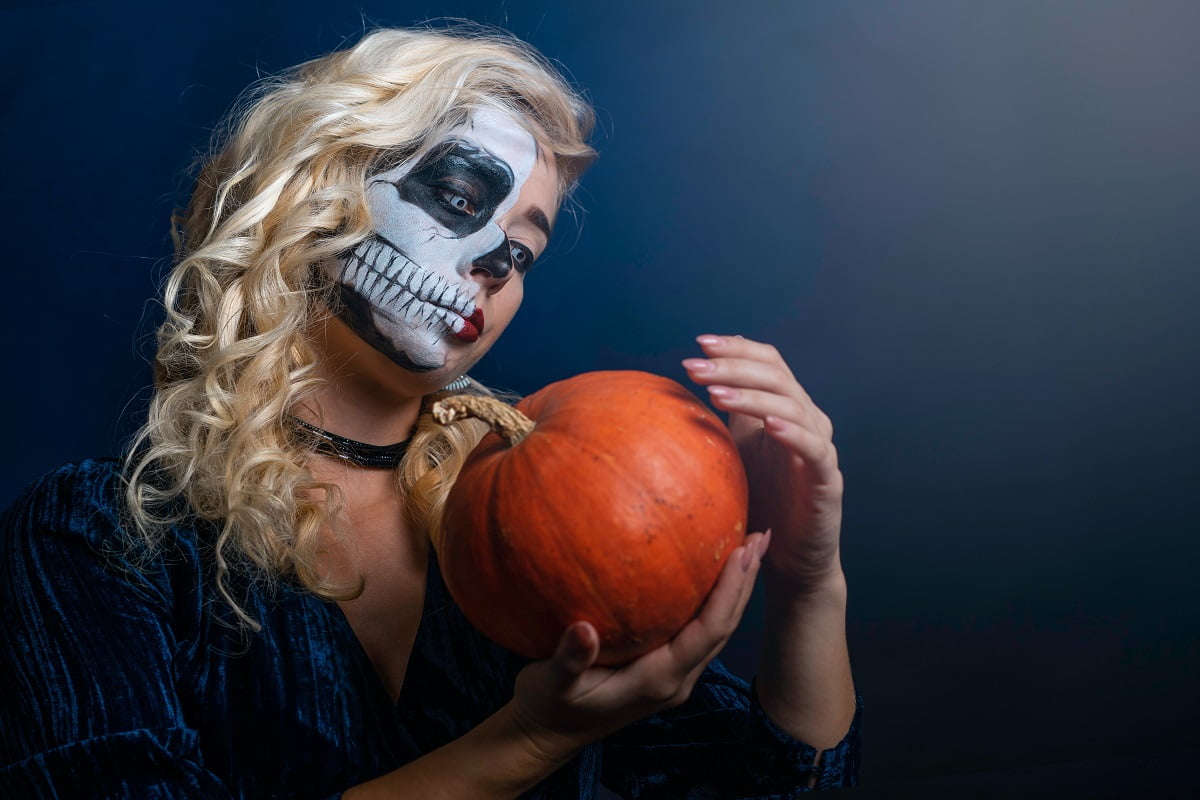
Getting Good Quality Body Paint
While finding body and face paints is easier than ever before, it is important to get paints that are of good quality. These are easier to work with, offer vibrant colors, and provide the best results. But finding such paints can be a bit tricky, so keep these things in mind:
1. Reputable Stores
When buying face paints, always go with reputable stores that are known to provide good quality products. Avoid purchasing from stores that only appear around Halloween, as they offer poor-quality paints that are difficult to use and do not provide the desired results.
2. Known Brands
Go with well-known brands that have been on the market for a long time and offer the best body paint. Such paints are generally safer, easier to apply, and last longer. Even if some newer brands can offer reliable products, finding them may require greater effort and time.
3. Good Customer Service
Purchasing from stores that offer specialized customer service can take your body painting process to the next level. Their staff includes body painters who can provide ideas, tips, and suggestions to improve your body painting experience.
What Type Of Paint Can Be Used For Face And Body Art Frequently Asked Questions ?
How Long Does Body Paint Last?
There is no standard time for which the body paint will last, and the period can range from a few hours to a couple of days, depending on the paints used. Products like henna can last up to two weeks with proper care, while alcohol-based paints can last for two to three days.
On the other hand, water-based paints do not last more than a day since sweat and contact with various surfaces can easily remove the pigment. And glitter tattoos can last for about a week.
What Is A Good Substitute For Face Paint?
You can use this DIY technique to create an excellent substitute for face paint.
Mix equal amounts of white cold cream or face lotion with cornstarch to make a lotion. Use water to thin the cornstarch or add more cornstarch to thicken it as required. You can also add a quarter teaspoon of vegetable oil or baby oil to make the paint smoother and prevent caking.
Can You Use Watercolor As Face Paint?
Watercolor is generally considered safe for face painting, especially children’s watercolor paints. These are generally safer than other types of watercolor because they are nontoxic and thus, can be safely applied to the face.
Is Acrylic Paint Safe For Skin?
Acrylic paint is usually used for painting purposes on surfaces like canvases and is a water-based solvent. It contains acrylic, color pigment, and a colorless liquid called MMA. Artists use acrylic paint because it is easier to clean and safer than oil-based paints. ‘
But it is not meant to be used on the skin since it stiffens upon hardening. This reduces the flexibility of the skin and prevents it from breathing, which can cause skin irritations. Additionally, it may contain harmful chemicals like ammonia, lead, and formaldehyde that should never be put on the skin.
What Do Cosplayers Use For Body Paint?
For cosplaying purposes, the best paint would be regular water-based face and body paints or airbrush body paints. Water based paints, when wet, can be easily mixed to create new colors, which helps get the right shade.
Airbrush paints also offer several advantages for cosplayers. They can be easily applied to various areas of the skin and can be easily diluted and mixed to create various shades.
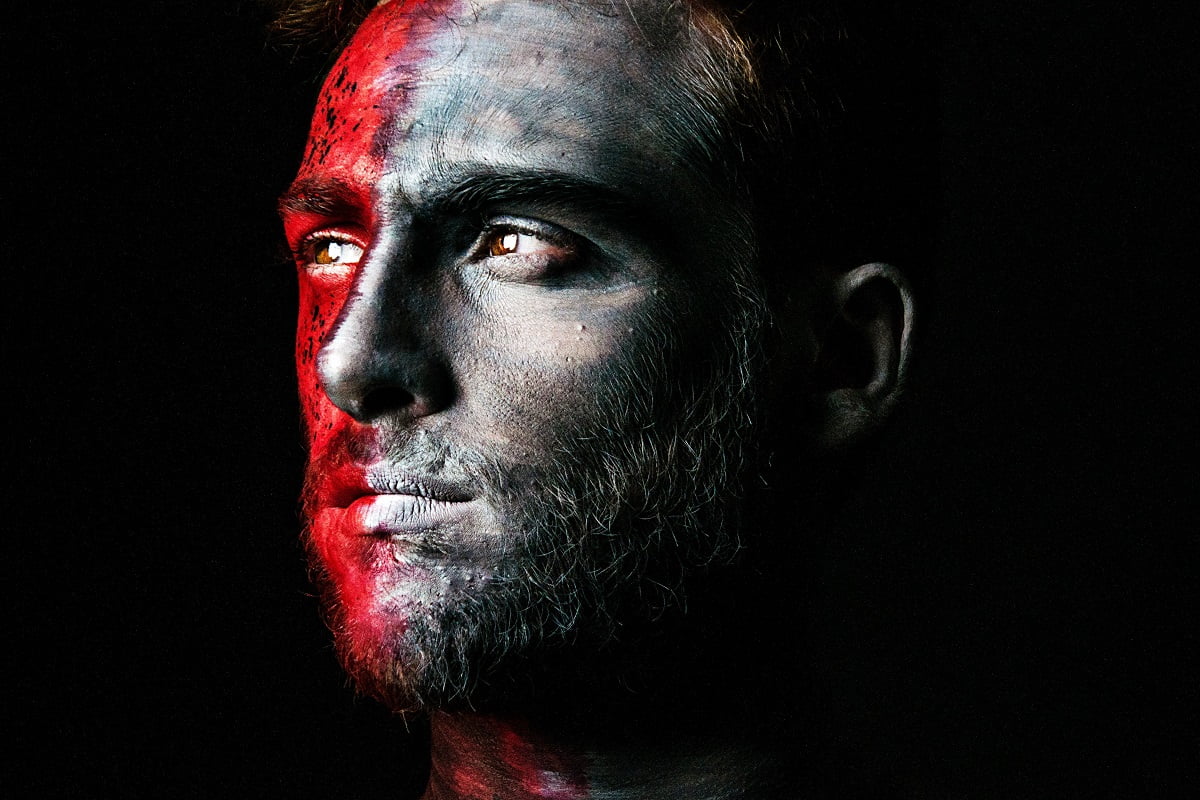
What Type Of Paint Can Be Used For Face And Body Art Final Thoughts
While the purpose of body and face painting may have evolved over the years, the art itself remains quite popular today. You can see some great examples of body art at conventions, cosplays, birthday parties, and other such occasions.
So, if you’re a beginner looking to try out this form of art, there has never been a better time as there are lots of paints and designs to choose from. However, when starting out, it is a good idea to go with simple designs that are easier and can be completed quickly.
Now that you are ready to find the type of paint most suitable for you, it is time to conclude this guide. Until next time!
